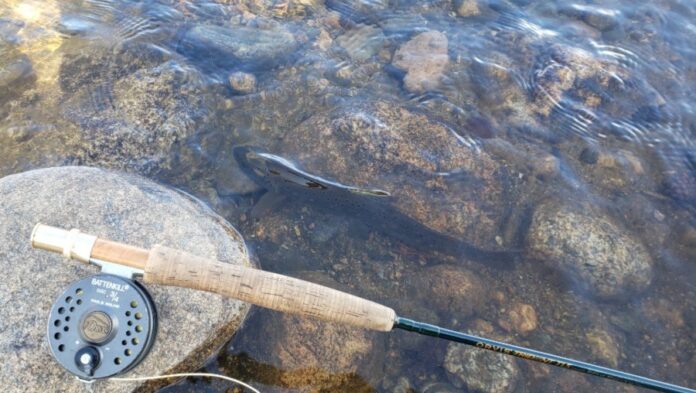All photos by Evan Jones
One big challenge of late-season fishing is having to use such small flies and light tippet. Lower flows, clearer water, and an entire season of angling pressure make trout much harder to fool toward the end of the year, so it’s not unusual for fly anglers to resort to size 20 hooks on 6x or even 7x tippet, which is rated at just 2.5-pound test. A rig that delicate requires some careful handling in order to remain intact, or you’re going to spend a good chunk of the day rebuilding it over and over with cold, clumsy fingers. So here are 3 tips to help you protect light tippet and keep it from snapping:
1. Use a Slower-Action Rod
The easiest way to protect light tippet is to use a more flexible fly rod–one with slower action. By bending farther down into the butt section, “softer” rods will provide more shock absorption when you’re setting the hook and fighting the fish, which will help to prevent the rapid changes in pressure that tend to break lighter tippets. Slower rods are also less likely to create the frustrating “bird’s nest” tangles than faster rods, because their tips don’t move back and forth as rapidly.

2. Use Fine-Wire Hooks
Another way to help keep your light tippet intact is to switch to fine-wire hooks, such as these 1x fine caddis emerger hooks. Many smaller hooks use heavy wire in order to maintain strength, ensuring that your light tippet will always break before the hook bends out, particularly when you’re snagged on the bottom. But with fine-wire hooks, it’s actually possible to straighten them out–even with 6x tippet–which will save you from having to break off and re-tie the entire rig. The trick is to point your rod directly at the snag and begin applying increasing tension to the line as smoothly as possible, rather than jerking on the line abruptly.

3. Fight Smarter, Not Harder
It’s possible to land a fish that weighs a lot more than 2.5 pounds using 2.5-pound (7x) tippet, so long as you never allow the fish to exert its full weight against your line. Granted, that’s a lot easier said than done, but there is a tried-and-true technique you can use to help manage your line tension in most situations. When you first hook a fish on light tippet, raise your rod and immediately take a few slow steps backward towards the bank. That will help to take up any remaining slack in the line without putting sudden pressure on the tippet, and will also turn the fish’s head toward you. Just try to maintain tension from there, walking backward even farther if that helps, and be ready to run downstream if the fish takes off, because you won’t likely be able to stop it.
Evan Jones is the assistant editor of the Orvis Fly Fishing blog. He spent a decade living on the Florida coast and now lives in Colorado.
Credit: Source link































